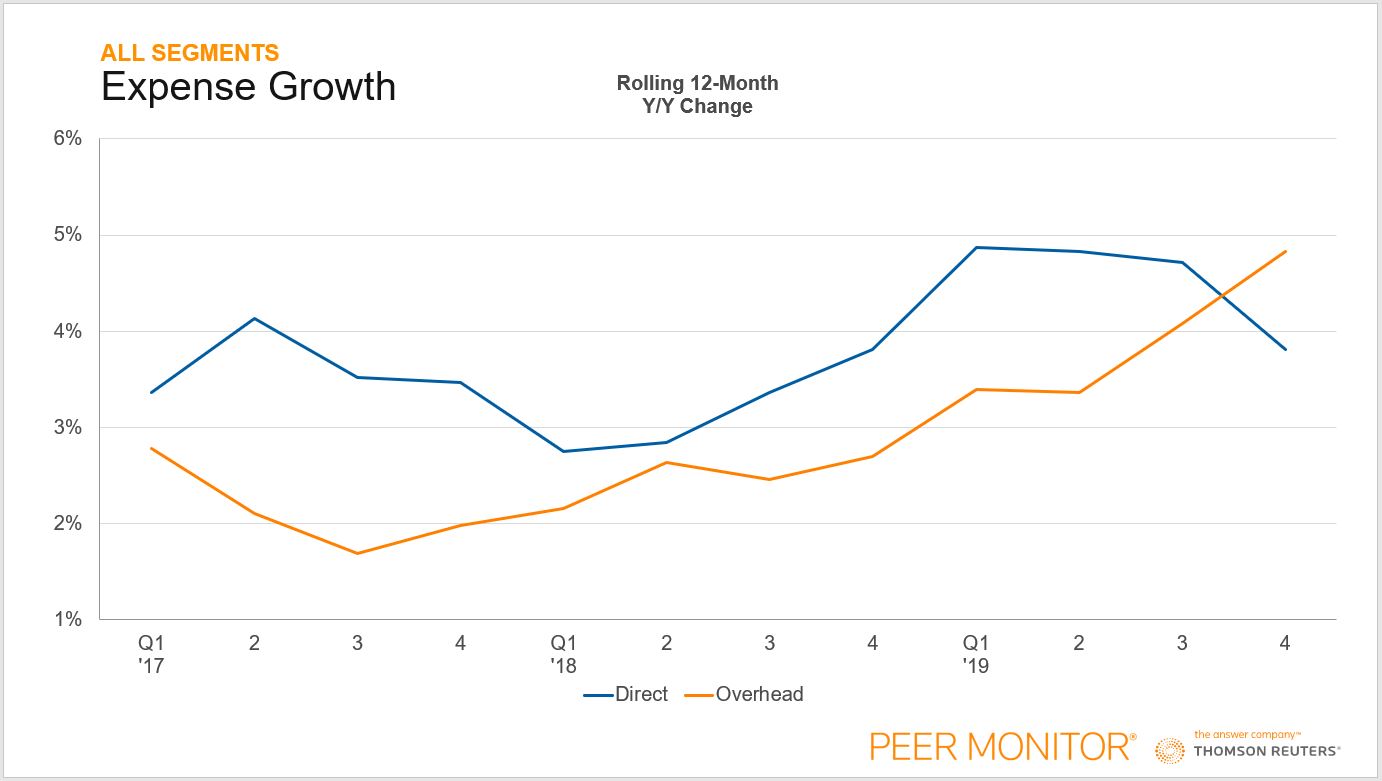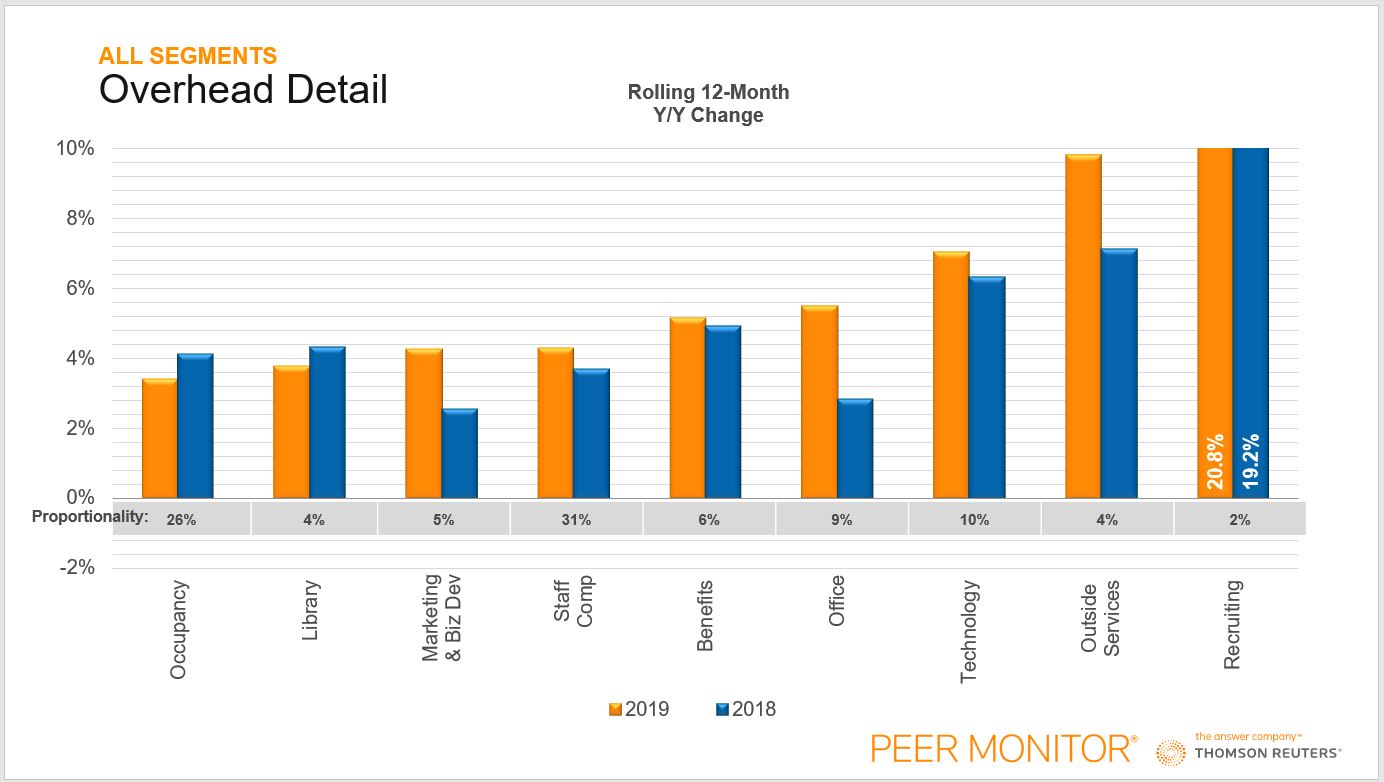When looking at the last 3 years of expense data, the increasing pace of overhead expense growth in 2019 becomes very evident, weighing on the current PMI
There are many indicators that currently signal that the legal market is gaining strength.
For example, law firms saw the first two-year stretch of 1.0% or better demand growth since the Great Recession, with the recent fourth quarter pitching in a 1.1% increase. Not only has legal demand grown, but worked rate growth was as high as ever, seeing 4.0% increases across the industry in the fourth quarter, and 3.8% growth for the year.
And yet, the Thomson Reuters Peer Monitor Economic Index (PMI) recently slid three points to 53, due in part to high expense growth, which was one of the more under-emphasized — yet pervasive — themes of 2019.

When looking at the last three years of expense data, the increasing pace of expense growth in 2019 becomes very evident. In 2017 and 2018, Indirect or Overhead expense growth stayed below 3% for all quarters, hitting a low point of 1.7% during Q3 of 2017. During that same time, Direct expense growth stayed below the 4% threshold except for one quarter. (For the purpose of our analysis, we use the term Direct expenses to refer to those expenses related to fee earners, primarily compensation and benefits costs of lawyers and other timekeepers. Indirect or Overhead expenses refer to all other expenses of the firm, including occupancy costs, administrative and staff compensation and benefits, technology costs, recruiting expenses, business development costs, etc.)
In 2019, both Overhead and Direct expenses broke their respective ceilings, with Overhead expenses increasing throughout the year, arriving at a mammoth 4.8% increase in Q4. This is significant, because breaking through 4.0% Overhead growth in a quarter hasn’t happened since 2016, and 4.8% growth hasn’t been seen since pre-Recession times. Direct expenses started 2019 weighing heavily on margins, increasing on average 4.8% through the first three quarters of 2019, before slowing in Q4 growth to 3.8%.

Further, by drilling down on how fast parts of firms’ Overhead expenses grew last year can provide additional insights on where law firms emphasized investment in 2019, relative to 2018. One interesting thing to note, for example, is that all these categories grew both in 2019 and 2018 showing the widespread nature of these Overhead expense increases. And last year’s expense growth outpaced 2018 and was most evident in the areas of marketing & business development, office expenses, technology, and outside services.
There also is a quickening growth for staff compensation, which represents 31% of all Overhead dollars spent, highlighting how law firms have been increasing non-lawyer headcount. Also recruiting costs continue to see a huge year-over-year growth of nearly 20%, showcasing the increased difficulty in attracting top talent.
The growth in Direct expenses is not as surprising, considering the much-publicized associate pay increases in 2019. Further, lawyer headcount growth has been prevalent throughout the market, with the average firm increasing the number of their lawyers by a full 2.0%. No surprise then, that the resulting increase in Direct expenses as well as the contraction in productivity has taken its toll on the PMI figure.
Combine that with massive Overhead expense increases across the board, and you can see why margins may be tighter. And that in turn, can shed some more light on why the PMI can be declining while rates and demand increases continue to grab headlines.
To find out more about what factors are influencing PMI, you can download a copy of the Q4 2019 PMI report here.






